KATHMANDU: Based on Mohan Baidya’s revolutionary and Dr. Baburam Bhattarai’s scientific ideology, Pushpa Kamal Dahal “Prachanda” led the CPN-Maoist making it a popular party.
By adapting the revolutionary ideology of Baidya, Prachanda spearheaded the “People’s War” in 2052 BS with the full-fledged support of Dr. Baburam Bhattarai.
The unity between Prachanda, Baburam and Baidya, once inspired by the idea of a “revolution”, could not remain intact. And by the time of the party’s 8th General Convention, it is split into ten factions.
Once strong and united, it was this party that spearheaded the decade-long “People’s War” with the agenda of establishing Nepal as a republic state, and federalism.
With the signing of the Comprehensive Peace Accord in 2006, the Maoists succeeded in becoming the number one political force in the country after the first general elections.
However, as the party is holding its eighth convention in Kathmandu, it is something like Prachanda’s private company as the once “revolutionary” leaders have been mere followers of their supremo Prachanda rather than real leaders of the people.
Prachanda’s confidants and accomplices have left him. They have parted ways with their once “supreme commander” by establishing their party or joining other political parties.
Sadly, the 8th General Convention of the once politically, economically and socially radical revolutionary and transformative party has given the smell of a club or a general assembly of a private company.
Maoists split into 10 factions
The Maoists that started the “People’s War” in 2052 BS became a part of the Second People’s Movement of 2062 BS. When the then King Gyanendra took power, the Nepali Congress and the CPN-UML launched a street agitation with the support of the then underground Maoists.
The 12-point agreement signed in New Delhi, India, put a brake on the “People’s War” and brought the Maoists into peaceful politics. The same agreement established democracy by abolishing Nepal’s 240 years of monarchy.
Two years later on Jestha 15, 2065 BS, Nepal was declared a republic by abolishing the monarchy. To recall, republicanism was the agenda of the Maoist party.

The Maoists, which succeeded in declaring a republic from the first Constituent Assembly, began to disintegrate internally. When Prachanda became the first Prime Minister of the Republic of Nepal, his comrades Baidya and Baburam started a decisive internal struggle even though the party emerged as the largest party in the first general elections held after the establishment of a republic.
However, the first Constituent Assembly failed to draft the new constitution because of which the Maoist party started to decline.
Soon after Dr. Baburam Bhattarai became the Prime Minister in 2068 BS Baidya split from the Maoists to form NCP (Revolutionary Maoist) party.
The split had a huge impact on the party led by Prachanda. Leaders including Baidya, Ram Bahadur Thapa “Badal”, Netra Bikram Chand “Biplav” and Pampha Bhusal left the party to join the CPN-Maoist Revolutionary.
Bidya left the Maoist party alleging Prachanda for not working as per the party ideology, and that he betrayed the achievements of the “People’s War”.
With the split, Prachanda’s Maoist party became the third party in the second Constituent Assembly election, which was boycotted by Baidya’s party.
Meanwhile, the Constituent Assembly promulgated the new Constitution of Nepal in 2015 that formally implemented federalism in the country when the then Nepali Congress President Sushil Koirala was the Prime Minister.
Within a few days of the promulgation of the constitution, Prachanda’s other comrade Dr. Baburam Bhattarai also announced his resignation from the Maoist party labeling the Maoist a “broker” party.
He then launched a new political outfit “Naya Shakti Party”.
By this time, the Biplav-led faction started a revolt. The outfit announced a revolt and went underground to re-launch another “People’s War” by forming CPN (Maoist).
Meanwhile, another group of Maoists led by Badal returned to the Maoist party led by Prachanda.
By the time of the 2074 election, the Maoists were formally divided into four factions: Prachanda, Baburam, Baidya and Biplab.
Although Badal returned to the main party, he became the fifth faction of the Maoists as he led the disgruntled faction inside the party.
After the election, the Maoists merged with the CPN-UML to form the Nepal Communist Party (NCP) led by Prachanda and KP Sharma Oli as party Chairmen.
Even though the unity with the UML was a “means” for the Maoists to win the elections, it also became a catalyst for the decline of the once-revolutionary force.

While remaining united with NCP, differences started to surface between Prachanda and Badal.
Following a crisis in the NCP, the Maoist party was revived under Prachanda’s leadership with the Supreme Court’s order declaring both the UML and Maoist as separate parties restoring them to their old state.
Ram Bahadur Thapa “Badal”, however, remained in UML. Along with Badal, leaders including Mani Thapa, Top Bahadur Rayamajhi and Lekhraj Bhatt also remained as UML leaders.
After the Maoist party was revived, Maoist leader Gopal Kiranti formed the CPN-Maoist Center rather than joining Prachanda’s Maoist party.
Likewise, Biswabhakta Dulal “Ahuti”, who also split from the Maoists formed a new party named Baigyanik Samajbadi Party (Scientific Socialist Party), is also one of them.
With repeated splits, the Maoist party led by Prachanda turned into a fragmented party by the time of the party’s eighth general convention.
The leaders who were established by the armed conflict in the name of “People’s War” are now divided into several parties including the Prachanda-led Maoist party, Baidya-led Maoist party, Biplav-led Maoist party and Gopal Kiranti-led Maoist party.
Likewise, Dr. Baburam Bhattarai is leading the Janata Samajwadi Party. While Ahuti has launched a new party, Badal is a UML leader. Currently, seven factions of the Maoists actively involved in politics exist so far.
Other people have been inactive in politics because of the frustration with the Maoist party’s “tricky” politics.
One among them is Lokendra Bishta Magar, once a popular Maoist leader, who is currently involved in the Dragon fruit business.
He says, “There is nothing new in the Maoist party. The only difference is that the party has shrunk to become Prachanda’s outfit.”
Similarly, Shyam Kumar Shrestha, once a staunch revolutionary, became a proportional member in the first Constituent Assembly. But now he says the Maoists are becoming “more of a trend than a political party.”
Similarly, the situation of ethnic organizations within the Maoist party is also pathetic. The situation of Dalit leaders, led by Tilak Pariyar, in particular, is becoming non-existent in the Maoist party.
Pariyar is currently the Province Chief of Karnali Province and is a member of the Maoist party, but is dissatisfied with Prachanda. However, since they are not able to express their grudges openly, they are often calmed down by giving political appointments.

Another faction that has split from the Maoists is the former Maoist militant group, which is looking for opportunities. This group has been getting closer to UML. As a section of the Maoist party is still in the UML, it is moving around for opportunities.
Maoist party becomes Prachanda’s company
Once the largest party, the Maoist has witnessed as many as 10 splits as it is holding its eighth general convention.
Although the cadres were called to Kathmandu a few days ago as a national conference, the Maoists decided to hold the eighth general convention at the last moment. Seen in this light, the CPN-Maoist has become more like Prachanda’s private company than a political party.
Interestingly, other leaders and cadres of the party are silent at a time when the party is run by Prachanda’s will and not by necessity.
Yesterday’s CPN-Maoist is more like a “Prachanda Company” after the leaders who rebelled against Prachanda’s whims left the party.


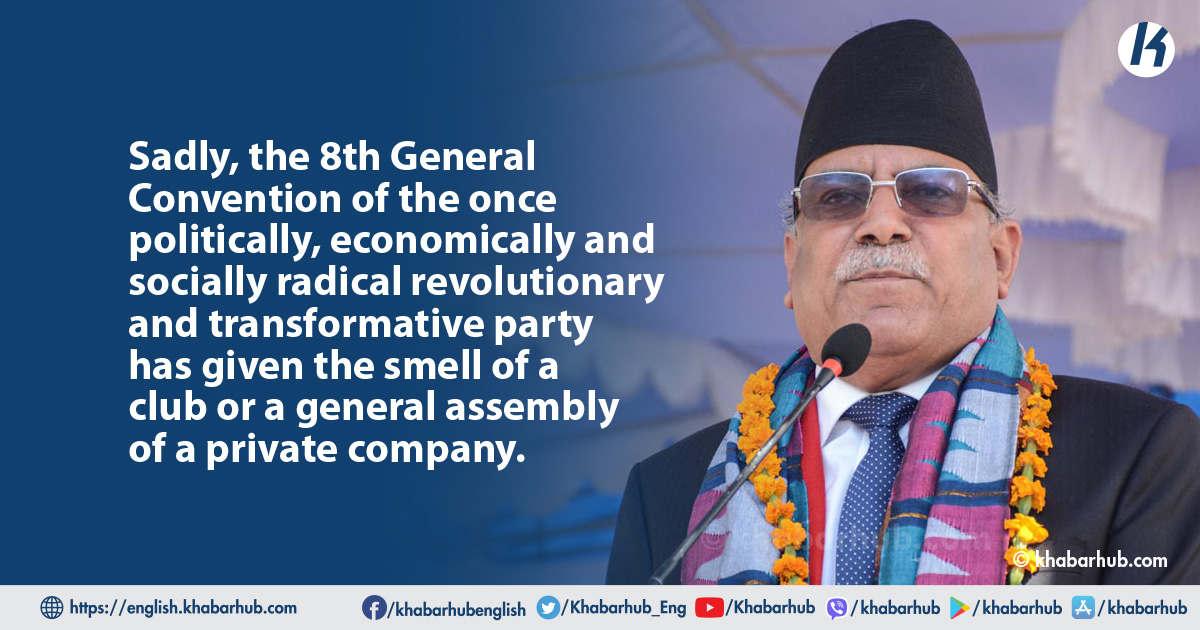
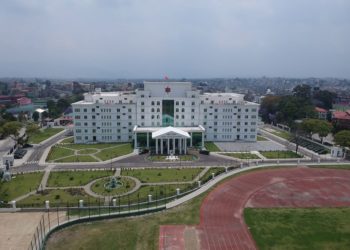
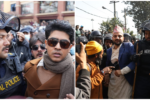

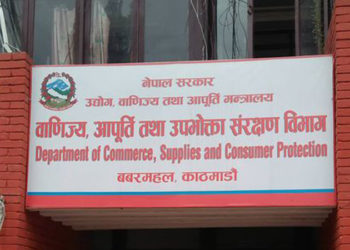
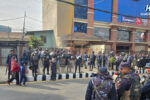

Comment